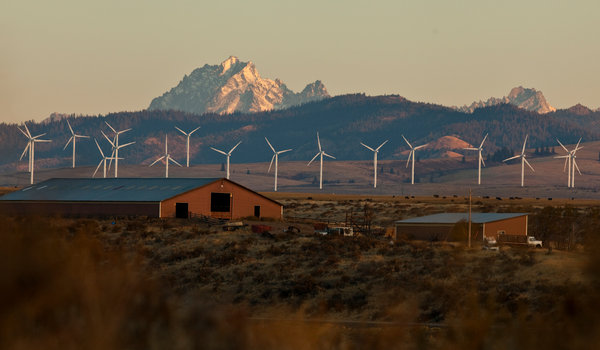In the Pacific Northwest, wind power has become an important source of income in rural areas, where energy entrepreneurs are eagerly erecting turbines in windy zones like the Columbia River Gorge. But wind is a volatile beast, and all the new turbines have presented utilities with a problem: when it’s storming, the turbines create more electricity than the grid can soak up.
In the New York Times, Matthew L. Wald covers a novel pilot project in which consumers are being recruited to help stabilize the power grid in times of excess supply. The volunteers draw in the excess energy and store it in a basement water heater or a space heater outfitted by the utility.
When excess supply threatens [the utility]’s grid, an operator in a control room hundreds of miles away will now dial up a volunteer’s water heater, raising the thermostat by 60 more degrees. Ceramic bricks in a nearby electric space heater can be warmed to hundreds of degrees.
The devices then function as thermal batteries, capable of giving back the energy when it is needed. Microchips run both systems, ensuring that tap-water and room temperatures in the home hardly vary.
The dilemma of having more energy than the system can handle is a particular issue in the Pacific Northwest, but with the growth of renewable energy across the country, other regions may find themselves in similar situations. California, for example, is committed to getting a third of its electricity from renewable sources by 2020. That won’t be easy if the state has to turn off turbines on super windy days to protect the grid.
(via NYT)
Photo: A wind farm near Ellensburg, Wash. (Matthew Ryan Williams / NYT)
